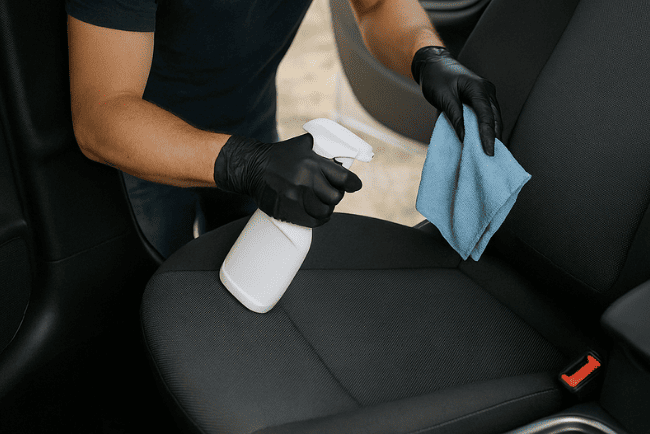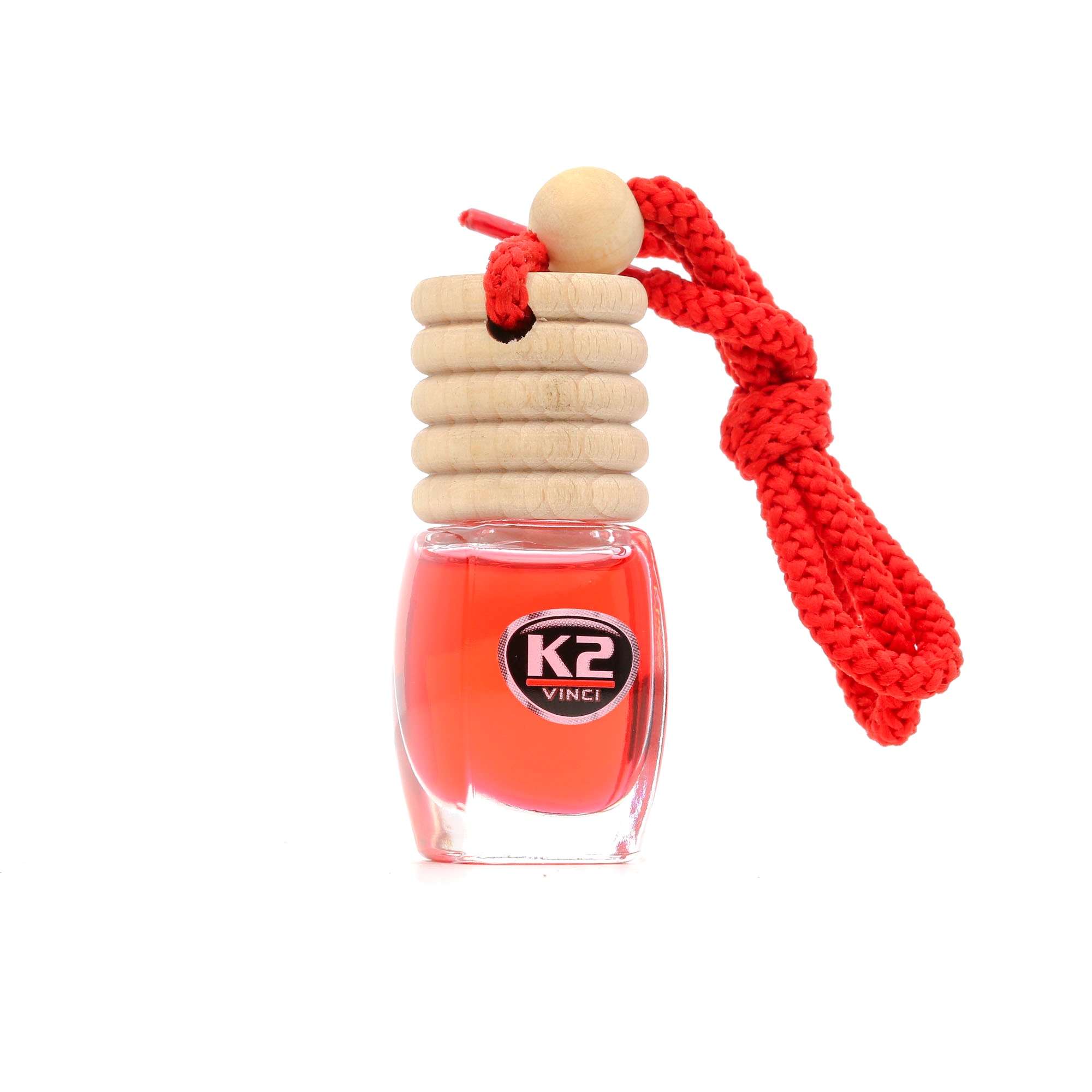Table of Contents
DIY guide: How to clean car seats
No matter how careful you are, unless you keep your car seats covered at all times, they're bound to get dirty eventually. Over time, seat fabric collects crumbs, mud, spills and sweat, leaving unpleasant stains and odours. This doesn’t just look bad, it can gradually damage the upholstery and reduce the value of your vehicle. Keep your car looking and smelling fresh with an achievable interior cleaning routine.
Step-by-step: the best way to clean car seats and remove stains
Before applying any interior car cleaners, the first step is to remove all loose debris. Use a vacuum cleaner with a soft brush attachment to lift dust, dirt, and crumbs. If you have pets, a rubber pet hair brush or lint roller is ideal for getting rid of stubborn fur.
Tip: When cleaning the entire interior, always work from top to bottom. Clean the ceiling and upper surfaces before vacuuming the seats to avoid recontaminating them with falling dust.
Once that is done, you can move on to a more thorough clean depending on your seat material. Each type requires a slightly different approach to avoid damaging the surface or causing discolouration.





How to clean leather car seats
Leather upholstery is typically more resistant to stains than fabric, but it also requires careful handling to avoid scratches and cracking. Always use a specialist leather car seat cleaner and avoid general household cleaners that could dry out or discolour the surface.
- Apply the leather shampoo in small sections, following the product instructions. Try cleaning small sections at a time rather than applying the solution all over to prevent discolouration.
- Gently work it in with a soft bristle brush to lift dirt and break down grime.
- Use a damp microfibre cloth to remove the residue and any leftover dirt.
- If the leather is cracked or torn, apply the cleaner using the cloth instead of a brush, and limit moisture to prevent further damage.
- Wipe the surface again with a clean, dry cloth until fully dry.
Tip: Finish off with a leather conditioner to help preserve the upholstery and prevent future cracking or fading.

Cleaning vinyl car seats
Vinyl seats are relatively easy to maintain. A basic all-purpose cleaner or a mild soap and warm water mixture will usually do the trick.
- Apply the solution using a cloth or sponge and clean in circular motions.
- Avoid any products with bleach or ammonia, which can degrade the vinyl.
After cleaning, wipe the seats down with a dry cloth to remove the excess moisture.
How to clean fabric/cloth car seats
Fabric seats are often the most susceptible to stains but also the most forgiving when it comes to cleaning methods. For light stains, a dedicated upholstery spray may be enough. For tougher marks, a foam-based car carpet cleaner spray may penetrate the fibres more effectively.
- Lightly spray the product on visible stains or dirty patches (always check the label for material compatibility). Follow the product instructions carefully.
- Allow it to soak in briefly, then scrub with a soft or medium-bristle brush.
- Alternative: You can also try a homemade mix of warm water and laundry detergent for light cleaning tasks.
- Blot the area with an absorbent towel to lift moisture and loosened dirt.
- Let the seat dry thoroughly with good ventilation.
To avoid causing damage while cleaning car seats, follow these general guidelines (do’s and don’ts). Ideal for car owners, this visual guide compares the safest techniques and common mistakes when cleaning leather, fabric, or vinyl upholstery.

How to keep your seats clean for longer
Once your seats are spotless, it’s worth taking steps to keep them that way:
- For leather, apply a conditioning product every few months to preserve softness and reduce the risk of cracking or discolouration.
- Fabric seats benefit from fabric protectants that repel spills and make cleaning easier next time. However, test the product on a small area first to avoid unexpected colour changes or lingering odours.
Regular vacuuming and wiping down the seats with a damp, soft cloth every couple of weeks can prevent dirt from building up in the first place.

Final tips for freshness
- Place a small fabric freshener or activated charcoal pouch under the seat to keep your interior smelling pleasant.
- Avoid eating or drinking in the car as much as possible to reduce the risk of stains.
- Use seat covers if you transport pets or small children frequently.
With a little care and the right tools, your car seats can stay clean, fresh, and comfortable for years to come.
You can learn more handy techniques and tricks in our video tutorials, as well as common mistakes that every car owner should know about. Check out this video on the Top 5 Car Interior Cleaning Mistakes You Should Avoid.
Frequently Asked Questions (FAQ)
Q: Can I use a steam cleaner on car seats?
A: Yes, but only on fabric seats. Avoid steam cleaning leather or vinyl as the heat and moisture can damage the material.
Q: How do I remove chewing gum from car upholstery?
A: Harden the gum using ice cubes in a bag, then gently scrape it off with a plastic scraper or old credit card.
Q: What’s the best way to dry car seats after cleaning?
A: Use an absorbent towel to blot excess moisture, then allow the car to air out with windows open or use a fan.
Top products related to this topic:















